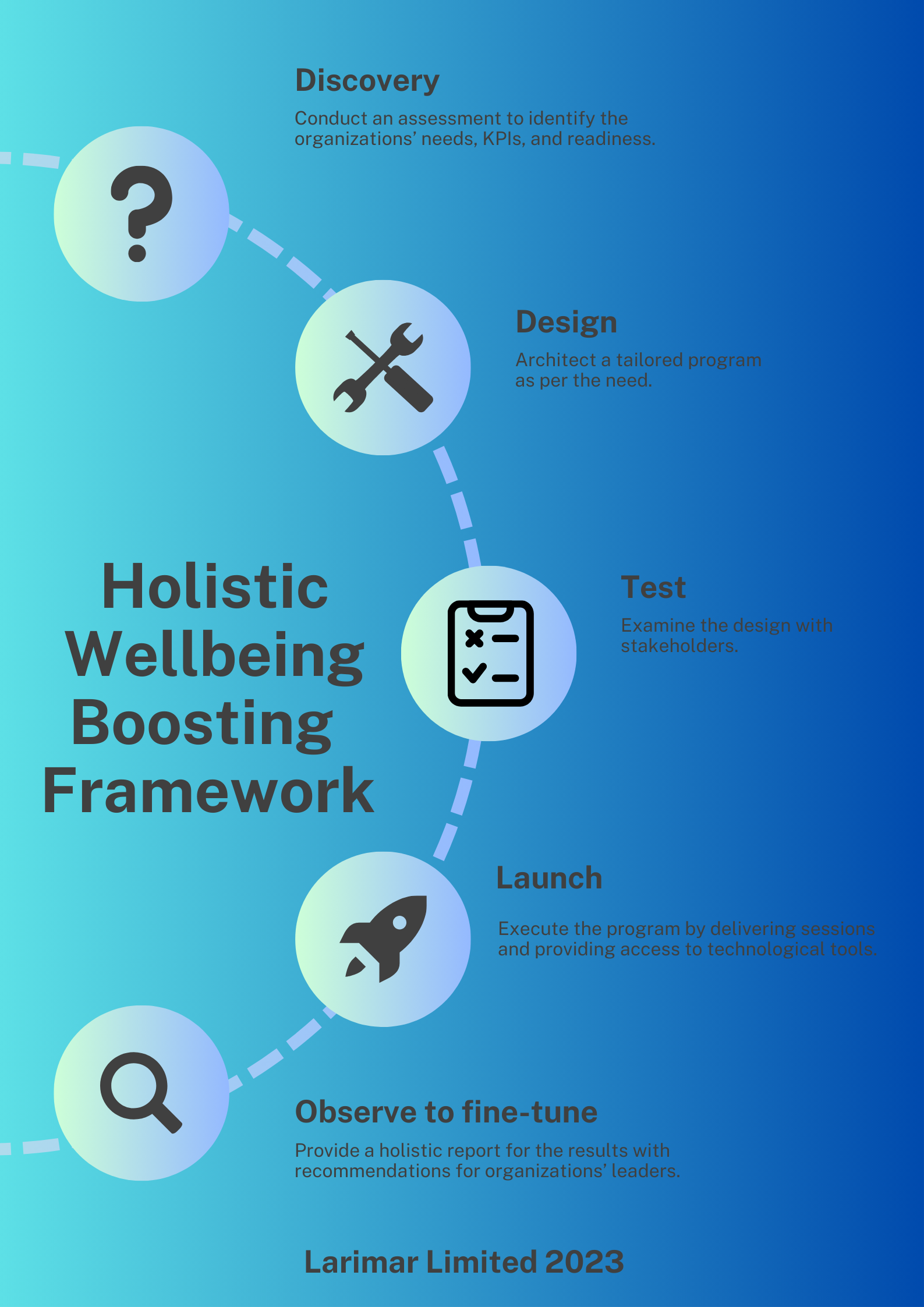
Operationalizing a multi-dimensional Wellbeing through a Holistic Framework
Why are theories, inspirational books, articles, sessions, workshops, social gatherings, and support groups insufficient for a transformational impact on the individual and organizational level when it comes to boosting wellbeing? They help, yet not enough!
Why is there a gap between the amount of investment in boosting organizational wellbeing and the actual, measurable impact of it, as the CIPD’s recent health and wellbeing report stated? Are we missing something?
A previous article has been published about the inward work needed in this domain, and we will continue in a series of articles to navigate the holistic framework that we designed during the research, development, and experimentation phases.
Let’s start with Dr. Yazan Hijazi’s quotes: “The way we frame things affects the message we send to others,” “Life is meant to be playful, and playfulness is not the opposite of work. Playfulness is the companion of work.”
This applies to all aspects of life, including our journey toward wellbeing transformation, and evolution. Thus, operationalizing wellbeing requires human-centric frameworks that are adaptable as per the need, digitized to sustain the impact, and playful for optimal engagement.
The goal of such frameworks is to create a safe space from within and around us, whether we are at home or work. This concept of psychological safety is considered the most important metric that matters in measuring outperforming teams according to a study conducted at Google.
Psychological safety is the most essential ‘group norm’ to build despite the culture and industry. It’s not a one-step process nor a direct one; it involves interconnected aspects and phases that start with building awareness, advocating leaders, championing prime movers to pave the way for safe acceptable knowledge delivery, and then evaluating, and adjusting to thrive in progressive rounds.
Below is a high-level illustration of our holistic approach that can be fine-tuned as per the need, and with gamified action items.

To start building your framework toward having psychological safety boosters, you should consider the following:
- Accept that you will face resistance and stigma about such a new norm.
- Share attractive wellbeing boosting calls for your employees or those who may be interested in enrolling.
- Champion enthusiasts by adding a challenge before accepting participants and selecting the ones who pass.
- Conduct playful sessions with hands-on exercises followed by one-on-one sessions, if needed, for a more genuine connection.
- Share anonymized data and recommendations with the leader about the champions.
- And most importantly, give champions, i.e., employees, access to self-care tools like the WellShift app and the leader dashboard.
These actions contribute to breaking the ice between them and building a rapport.
The first organization that has believed in such a framework is Al-Hussein Technical University, we have enjoyed working with their extraordinary leader; Prof. Ismael Al-Hinti, and the employees.
Starting the project from championing participants after the president’s call for applying, conducting two rounds of interactive workshops, and then delivering the technological tools; the wellbeing booster and the dashboard.
What we have learned is that the best way to change norms is to steadily move with baby steps and look for outcomes with curiosity and openness rather than considering them directives as they are dynamic; as humans, we are evolving, and our norms are the same.
Lastly, and as Prof. Viren Lall said:” Focus on what you can control; altering mindset, events, and feelings and learn to work in the rain.”
Stay tuned for a deep dive into the framework steps in the upcoming articles.
